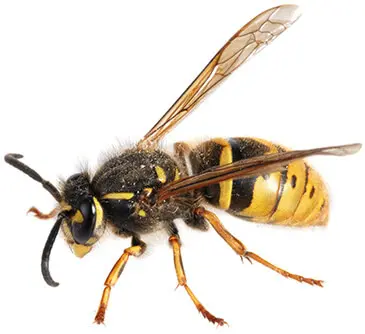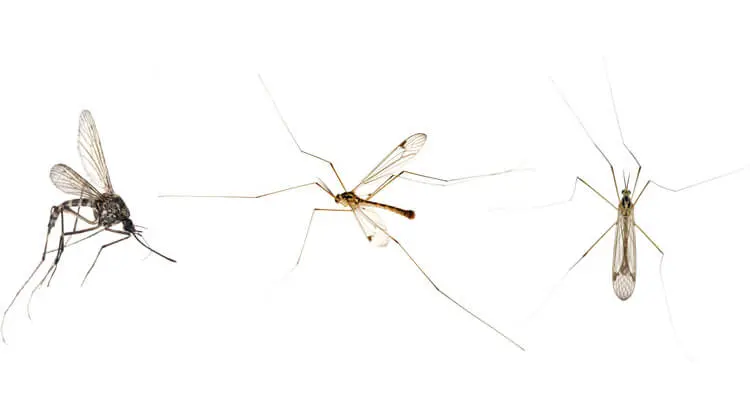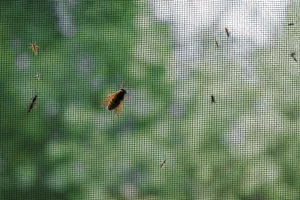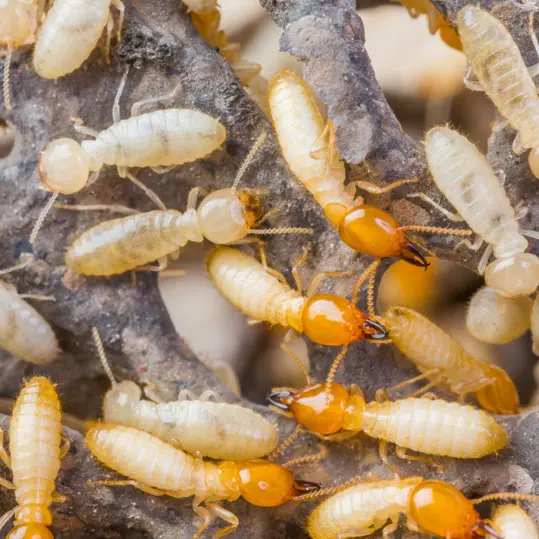Know The Difference Between The Area's Stinging Insects
Glen Carbon, IL, is home to dozens of species of flies, bees, and other flying insects. Many of these inhabitants are simply annoying, while others can present more significant problems for residents, including painful bites or stings. Because stinging insects often live in hives with a population of more than a hundred, they can present a danger to area residents. They should be carefully removed from your property by professional pest control specialists, like those at Brady Pest & Termite Control.
Some of the more commonly found stinging insects found in Glen Carbon, IL include:
German Yellowjackets: These insects are black and yellow, with spots of black on their abdomens. They may appear shiny and resemble paper wasps but with a thicker, stouter frame and appendages. Yellowjackets build in hollow voids such as those you would find in old animal burrows or between the walls of your home. These are the most aggressive species of stinging insects in the area, so if you notice several yellowjackets flying in a centralized area in or around your home, don’t try to tackle the problem yourself.
 Wasps: The biggest identifier for the wasp is their long, narrow body and thin legs that hang down when they fly. They come in different colors, including maroon or red, as well as black and yellow striped. The most common kind of wasp you will see in Glen Carbon, IL, is the paper wasp, which makes its nest in the eaves of homes and other open spots. Their nests look like umbrellas with an open honeycomb appearance made from a papery material. They are not naturally aggressive but will react if under attack. The mud dauber is another type of wasp that is named because it makes its nest from plastered mud on the ground or on the surface of a larger structure. They are solitary insects but can still live in a larger colony, and they have a black or blue-black appearance and are not aggressive or protective of their homes. However, they can become a nuisance in large numbers.
Wasps: The biggest identifier for the wasp is their long, narrow body and thin legs that hang down when they fly. They come in different colors, including maroon or red, as well as black and yellow striped. The most common kind of wasp you will see in Glen Carbon, IL, is the paper wasp, which makes its nest in the eaves of homes and other open spots. Their nests look like umbrellas with an open honeycomb appearance made from a papery material. They are not naturally aggressive but will react if under attack. The mud dauber is another type of wasp that is named because it makes its nest from plastered mud on the ground or on the surface of a larger structure. They are solitary insects but can still live in a larger colony, and they have a black or blue-black appearance and are not aggressive or protective of their homes. However, they can become a nuisance in large numbers.
Bees: The common bee is striped in a black and yellow pattern and has a hairy appearance. The bumblebee is one of the easiest to recognize due to its size. Their nests look like a pile of grass and leaves that appear to have yellow bubbles. They are not aggressive and will only sting if they are in danger. Bumblebees don’t produce much honey, just enough to last a few days. Honeybees are smaller than bumblebees, but they create large communities, often in walls or other voids. Most people know the importance of the honeybee in pollinating flowers and enjoy the honey they make from the nectar.
Bald-faced Hornets: Bald-faced Hornets: Black flying insects with a white pattern on the face, and at the tail, these insects have long bodies that resemble a wasp but have a fuzzy appearance like that of a bee. Despite their name, they are wasps, not hornets, and are a bit larger than yellowjackets, averaging about 3/4″ long. Its nest looks like a small elongated basketball hanging from a tree or the eaves of a home and can contain up to 700 wasps. Bald-faced hornets are extremely dangerous if under attack and can sting multiple times in one interaction.
Why you are attracting stinging insects
Just like any other organism, stinging insects are opportunistic. If your property offers a sustainable food source and safety to make a nest, you’ll likely attract these insects and eventually harbor a large population. They often set up their nests in protected locations that are out of reach of local predators, but they have been known to create a home in crawl spaces or under porches occasionally.
Dangers of Stinging Insects
 Many of the dangers of stinging insects involve not the sting that they can inflict, but the chance of having an allergic reaction to the sting and developing anaphylaxis, which can be fatal in a matter of minutes. If you notice a large preponderance of bees or wasps near your Glen Carbon, IL home, don’t try to get rid of the nest yourself. Not only nest difficult to reach because of their usually high location, but you can also provoke the ire of an entire colony of stinging insects that will be attacking at once. You may try to prevent them from building nests on your property, to begin with by blocking off old sheds or buildings, moving woodpiles or other encouraging, encapsulating areas away from your home, or caulking near windows and doorway entryways so that there is not enough room for them to build. Buildings, moving woodpiles or other encouraging, encapsulating areas away from your home, or caulking near windows and doorway entryways so that there is not enough room for them to build.
Many of the dangers of stinging insects involve not the sting that they can inflict, but the chance of having an allergic reaction to the sting and developing anaphylaxis, which can be fatal in a matter of minutes. If you notice a large preponderance of bees or wasps near your Glen Carbon, IL home, don’t try to get rid of the nest yourself. Not only nest difficult to reach because of their usually high location, but you can also provoke the ire of an entire colony of stinging insects that will be attacking at once. You may try to prevent them from building nests on your property, to begin with by blocking off old sheds or buildings, moving woodpiles or other encouraging, encapsulating areas away from your home, or caulking near windows and doorway entryways so that there is not enough room for them to build. Buildings, moving woodpiles or other encouraging, encapsulating areas away from your home, or caulking near windows and doorway entryways so that there is not enough room for them to build.





